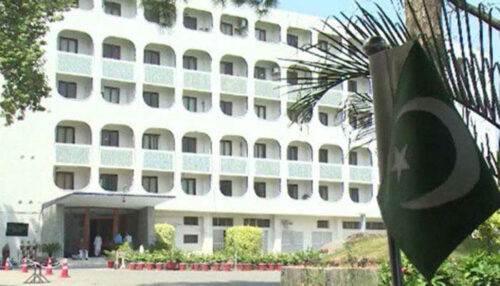By: Ahsan Ansari
Like every year, the monsoon rains in July 2025 have once again put Pakistan to a severe test. Torrential rains, flash floods, and melting glaciers across the country have so far claimed the lives of around 200 people, more than half of whom were children. The worst-affected areas include Punjab, Khyber Pakhtunkhwa, Gilgit-Baltistan, and the Kohistan region, where dozens of homes were destroyed, roads washed away, and thousands displaced. These scenes painfully recall the devastation of 2022 when one-third of Pakistan was submerged.
In the mountainous regions of Gilgit-Baltistan and Kohistan, the recent downpours caused terrifying destruction. Landslides triggered by heavy rainfall have already killed more than 25 people, with dozens still missing. In districts like Diamer, Astore, Hunza, and Nagar, several villages were buried under mud and rocks, and rescue operations are still underway. Blocked roads have made it extremely difficult for aid teams to reach the affected areas.
The Kohistan region was also severely affected by flash floods, sweeping away homes and forcing thousands to migrate. The destruction of roads and bridges disrupted not only transportation but also the supply of essential goods. Shortages of drinking water and medicines have triggered a secondary crisis in these regions.
Agriculture in Gilgit-Baltistan and Kohistan has also suffered a severe blow. Floodwaters damaged standing crops, orchards, and grazing lands – devastating local livelihoods dependent on farming and livestock. Experts warn that the risk of further landslides and glacier lake outburst floods (GLOFs) could increase in the coming weeks, necessitating immediate and long-term strategies.
The most heartbreaking aspect has been the deaths of children. Incidents like drowning, electrocution, and roof collapses have claimed the lives of over 85 children. On July 17 alone, 63 people died in Punjab in a single day. By mid-July, the total death toll had reached 180 to 200 people, with over 650 injured nationwide. Khyber Pakhtunkhwa recorded 38 deaths, and Balochistan and Sindh also suffered heavy impacts.
The rains have caused not only loss of life but also inflicted severe damage on infrastructure. Over 1,000 homes have been fully or partially destroyed. Slum areas, home to more than half of the urban population, were the most affected. Roads, bridges, regional dams, and communication systems have all been disrupted. In Chakwal, 400 mm of rain submerged villages, while in Rawalpindi, rising water levels in Nullah Lai forced mass evacuations. Farmlands were destroyed, sparking fears of another economic crisis similar to 2022.
Punjab has remained the epicenter of the crisis, with over 103 reported deaths and 393 injuries. Lahore and Rawalpindi have faced severe waterlogging. In Swat, a major tourist hub in Khyber Pakhtunkhwa, floodwaters have affected both locals and tourists. In Gilgit-Baltistan, temperatures soared to 48°C, accelerating glacial melting and raising fears of glacier lake outbursts. Alarmingly, there are only 13 glacier monitoring stations in the entire region, compared to 47 in Islamabad alone.
Pakistan’s crisis is not just a natural disaster—it’s also a governance failure. Despite contributing only 0.5% to global emissions, Pakistan is among the most climate-vulnerable countries. Compared to 2024, monsoon intensity has increased by 82% in 2025, and by 124% in Punjab alone. Yet, warnings issued by the National Disaster Management Authority (NDMA) are often vague and ineffective. Illegal construction along streams, blocked drainage systems, and unplanned urban settlements have magnified the threat.
The rescue system is under immense pressure. Punjab has only 100 permanent rescue personnel, and other provinces have even fewer. NDMA has only six national rescue teams with 700 total members, which is grossly inadequate for a population of 250 million.
Although some victims were airlifted by military helicopters, and Section 144 was imposed in Punjab to restrict access to water channels, the overall state response has remained slow and ineffective. After the 2022 disaster, the global community pledged $10 billion in aid for Pakistan, but by 2024, only $2.8 billion had been received. Experts attribute this delay to the lack of governmental reforms. Former Federal Minister for Climate Change Sherry Rehman stated, “These are not just natural disasters—they are the result of human negligence. Super monsoons are not normal. Pakistan must wake up now.”
Emergency aid alone is not sufficient to tackle this crisis. Pakistan needs an estimated $40–50 billion annually by 2050 to adapt to the impacts of climate change. Early warning systems must be established at the local level, advanced sensors for glacier monitoring must be installed, and urban planning must be overhauled to relocate populations living near water channels to safer locations.
If these foundational steps are not taken, each monsoon will bring a new wave of destruction. Pakistan must move beyond emotional speeches and commit to practical reforms, or else annual losses of life and property will become the nation’s tragic destiny.




